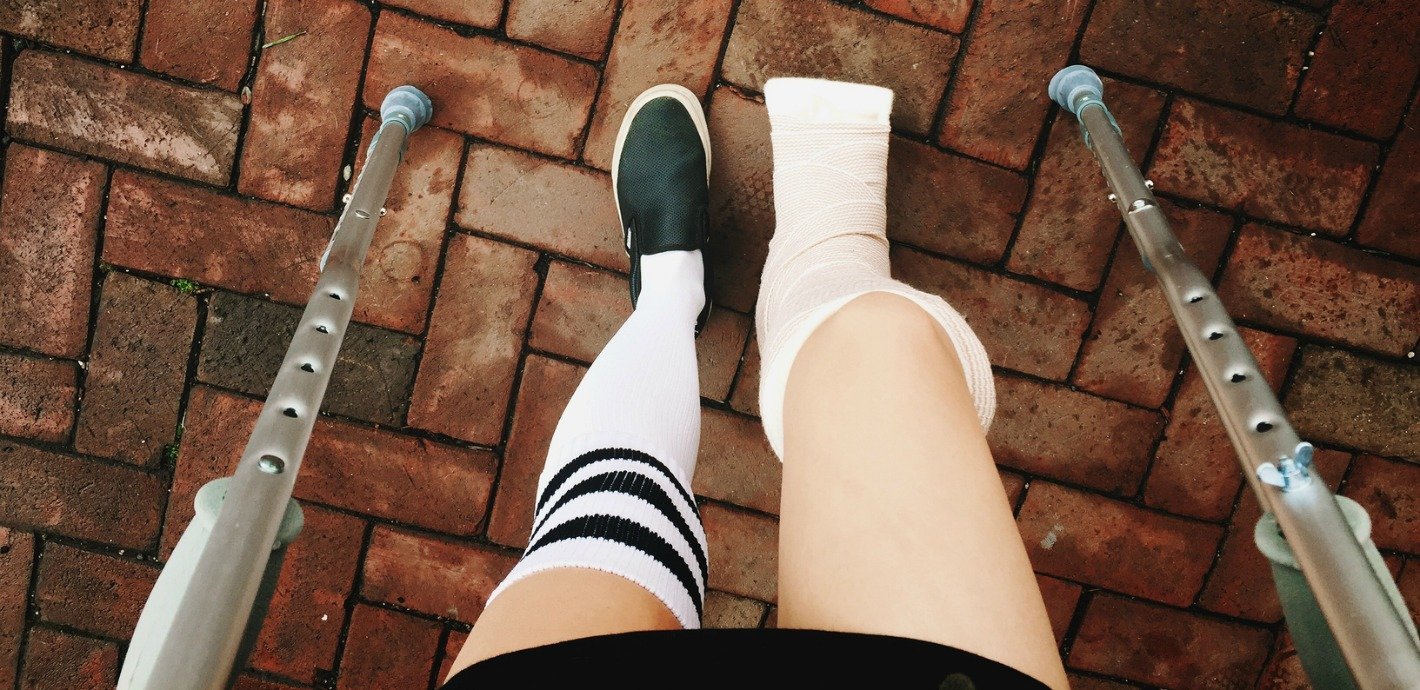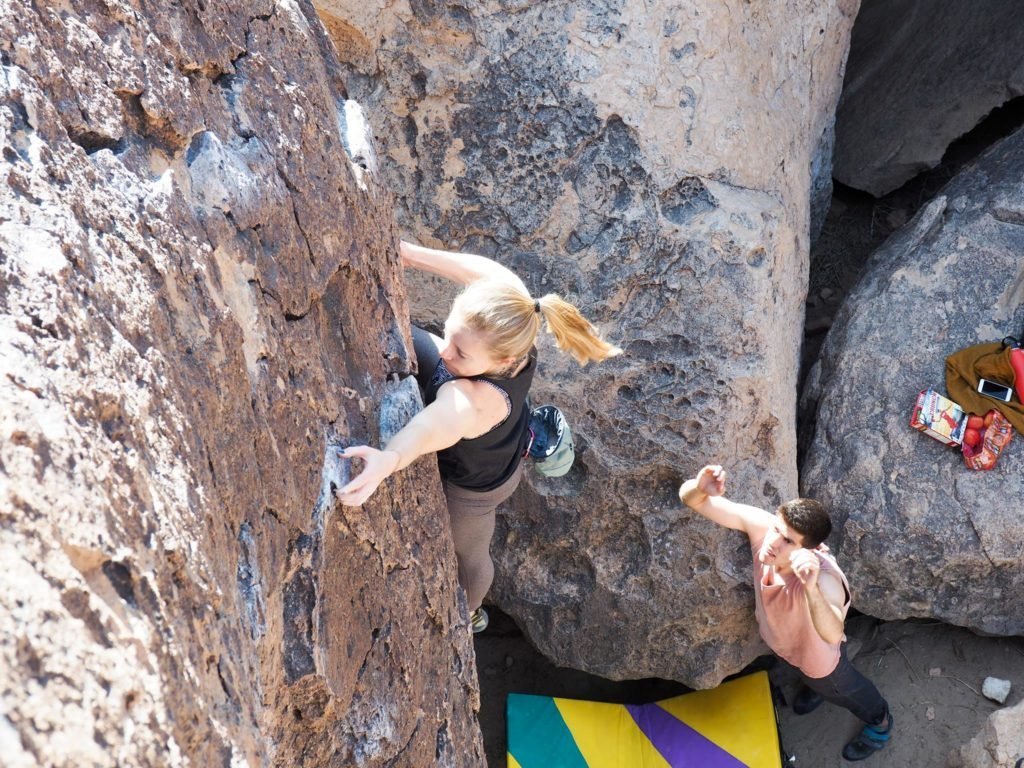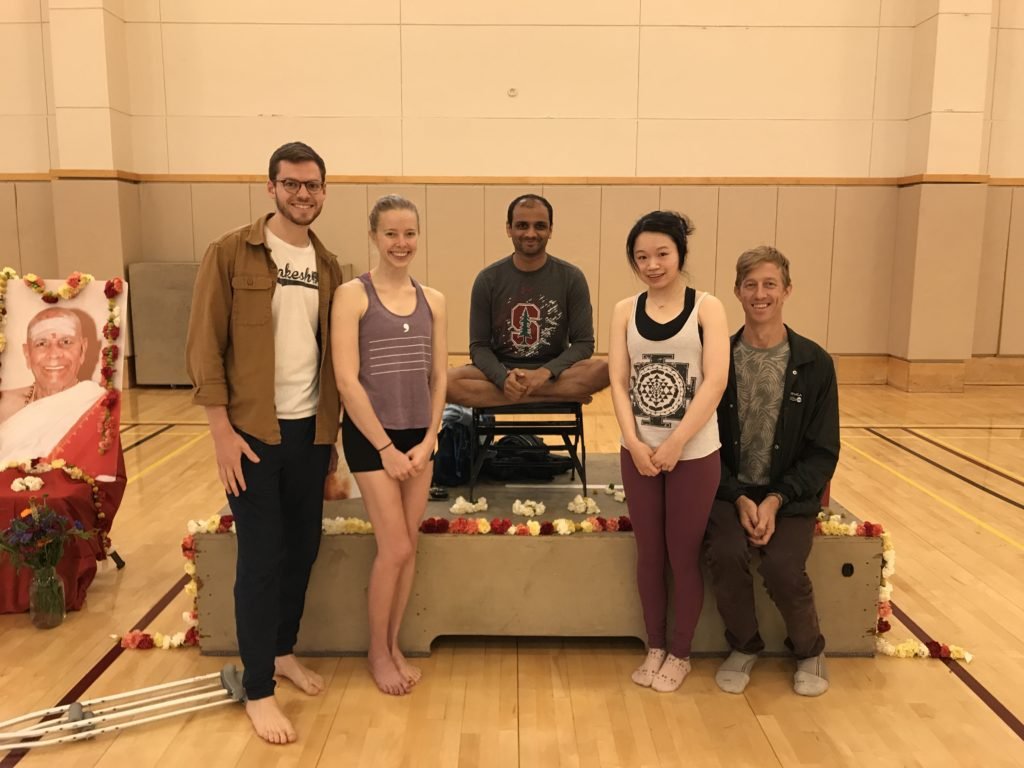It is not uncommon to see those who keep a regular yoga practice work through injuries, old or new, both on and off the mat. These setbacks can make one unsure how to approach a normal practice. Bringing one’s injuries to the led class, which is difficult to complete in a healthy body, requires a tremendous amount of creativity, compassion, patience, and surrender. It’s inspiring to witness, too, as many of us did at Stanford University in California, where more than 200 people gathered for a week this May to practice with Ashtanga-lineage-holder Sharath Jois during his three-city U.S. tour. There, we watched 23-year-old Katherine King participate, prevailing over her pain for a higher purpose.
This spring, King fell 10 feet while recreationally free climbing (sans ropes, belays or other support) in Bishop, California. She just missed the safety padding beneath her, landing on the hard granite, which shattered her calcaneus, or heel bone, into several pieces and blew her ankle out of alignment. The injury was so severe that surgeons had to insert a bone graft, plate, and screws in an effort to restore the contour of her heel, so it could begin to properly heal.
Six weeks after the procedure, King was able to move her ankle just enough to hobble around on crutches, which she was happy to do at Stanford, where her guru awaited. King had first picked up Ashtanga yoga under my guidance at the University of Virginia three years ago. Upon moving to northern California in 2016, she has continued her practice with Magnolia Zuniga at MysoreSF in San Francisco.
Still relatively new to the yoga community, King only knew a few practitioners in the room at Stanford, so it was especially heartwarmingly to see strangers come to her aid. With their sympathy and support, she rolled out her mat and pieced together a practice, cautiously working around her broken foot. Below, King reflects on this rewarding experience and the lessons she learned while practicing in this humbling and vulnerable state.
What fears did you face approaching your practice with an injury?
Mostly, I was afraid that Sharath would be upset or think I was being disrespectful, proud or reckless by practicing with a serious injury. Also, I feared that the people around me would be distracted or annoyed. I feared that if any of the modifications I had adopted were wrong, I would draw even more attention to myself and disrupt the count for the whole class. There were also practical worries. I had to think about the logistics of getting myself to an unfamiliar location, lugging my mat around, and relying on other people to help me get set up in the gym. Needless to say, I started practice on the first day feeling quite frayed and vulnerable.
How did Sharath and other practitioners respond?
Sharath came over and asked quietly if my foot was broken. I confirmed that it was and he gave me the sweetest look of compassion, finished the assist, and walked away. It was a huge relief to be quietly acknowledged. I felt accepted and completely at ease. It is easy to build him up in my head as a very intimidating and difficult figure, but his response to my injury on his U.S. tour was full of gentle understanding and empathy—and exactly what I needed at that moment.
The other practitioners were welcoming, thoughtful, encouraging, and open, too. I mentioned the injury in advance to those practicing near me so they knew to expect me in unexpected places. Each day, several people offered to help set my crutches against the wall, roll up my mat, hold doors open, etc. Even people who did not practice near me came over just to wish me well. Many said they were inspired to see me practicing, and others shared their own stories of serious illness or injury. There were many people in the room who connected with me because of what I am going through right now, and it was a great reminder that any room is full of people who have been through hard times of their own
Do you think people would have been as kind, understanding, and helpful if you had an injury or illness that was less visible?
I think so, yes. My injury is in many ways easier right now because it is visible. I came to the tour on crutches and in a boot. Even with the boot off, I had a big red scar running along the side of my foot. In the absence of those physical indicators, it becomes much easier to assume health.
If my injury were less visible or invisible, I may not have had as much help. That said, show me a daily practitioner and I will show you someone who has gone through a period of illness or injury. Most people have had to modify their practice to accommodate for pain at some point. Sharath has seen many bodies work through pain, and I believe he can detect our vulnerabilities in the way we hold our bodies and enter poses—no outward signs necessary!
One of my favorite Pattabhi Jois quotes (From Hatha Yoga Pradipika I. 66) as of late is, “Anyone can practice. Young man can practice. Old man can practice. Very old man can practice. Man who is sick, he can practice. Man who doesn’t have strength can practice. Except lazy people; lazy people can’t practice yoga.”
The requirements are not so many! I anxiously asked [fellow practitioner] Magnolia [Zuniga] if she thought it would be appropriate for me to attend, and she simply said “you come.” When reading phrases like those, it feels obvious that anyone is welcome. Yoga is therapeutic in nature; it is intended for those who need healing. It is perhaps easiest when I am at my strongest or most beautiful, but practice is at its realest when I can use it to go deep within myself and face the parts that are hurting or damaged.
Related: The Therapeutic Nature of the Aṣṭāṅga Yoga Primary Series
Why was it important for you to participate in Sharath Jois’ U.S. tour this year?
Practicing on tour is intense. The energy in the room is so vibrant, anticipatory, and concentrated. It can be nerve-wracking, but I found that very quickly it became a really solid feeling of focus and devotion. All of my ego and restlessness just melted away into really simple clarity and gratitude.
Sharath travels all over the world to visit students closer to their homes, and it is an awesome opportunity to check in with him when you cannot make it to Mysore, India (due to injury, work, family commitments, financial limitations, etc.). I also see it as a way to show gratitude to my teachers in the U.S. who sit with me day-after-day to cultivate this practice. Practicing on tour with my teachers and their teacher is the closest I can get to paramparā and it is amazing!
Also, practicing on tour is a good reminder to step back and let go of the little things that I cannot do, and focus on the larger purpose and motivation for practicing. My practice is serving its purpose, healing my body and calming my mind.










Comments (0)